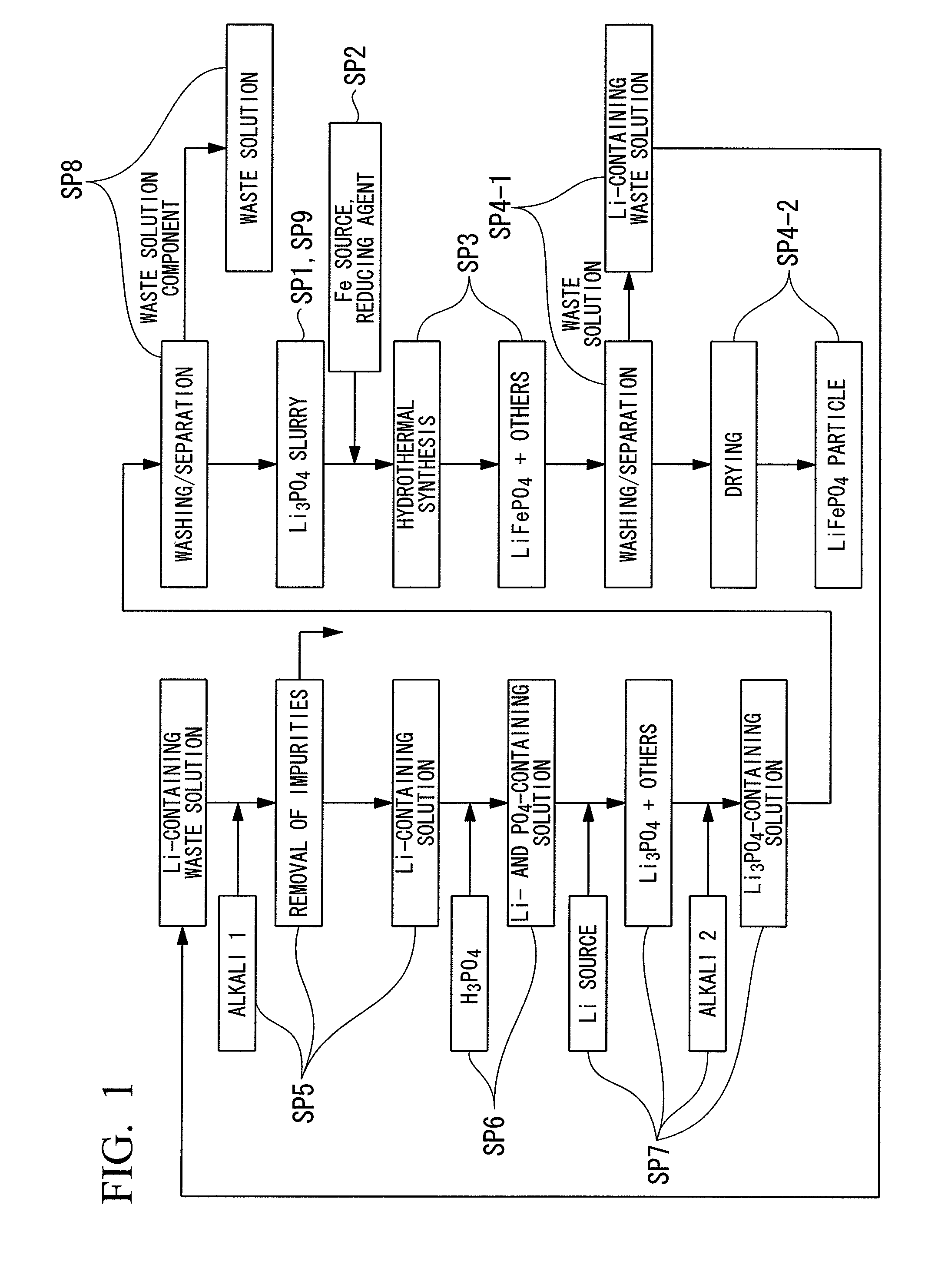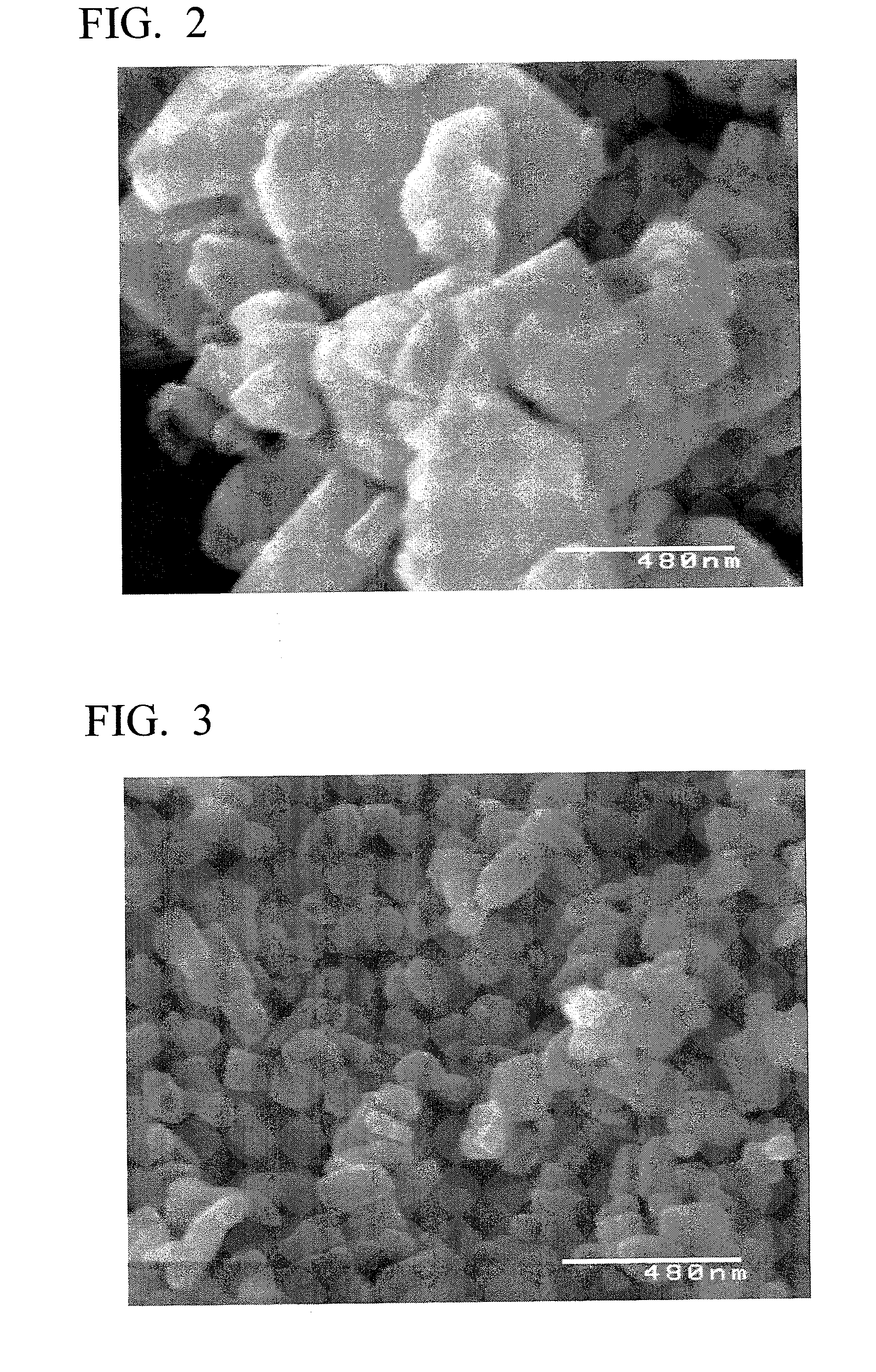Method for producing cathode active material for lithium ion batteries, cathode active material for lithium ion batteries obtained by the production method, lithium ion battery electrode, and lithium ion battery
a lithium ion battery and active material technology, applied in the direction of non-aqueous electrolyte cells, cell components, electric vehicles, etc., can solve the problems of resource and cost, resource and cost problems, and the direct application of licoo/sub>2 to large batteries used in hybrid vehicles, electric vehicles, and uninterruptible power systems which are expected, etc., to suppress the reaction rate and epitaxial growth of fine crystal particles produced in the initial stage of the reaction, small
- Summary
- Abstract
- Description
- Claims
- Application Information
AI Technical Summary
Benefits of technology
Problems solved by technology
Method used
Image
Examples
experimental example 1
[0112]3 mol of lithium chloride (LiCl) and 1 mol of phosphoric acid (H3PO4) were added to 1 L of pure water and stirred to obtain lithium phosphate (Li3PO4) slurry. Moreover, to this slurry, 1 mol of ferrous chloride (II) (FeCl2) was added, and in addition, water was added to obtain a raw material solution having a total amount of 2 L. This raw material solution has a concentration of 0.5 mol / L when converted in terms of LiFePO4.
[0113]Subsequently, the obtained raw material solution was loaded into an autoclave, and after inert gas was introduced therein, the raw material solution was subjected to a heating reaction for 6 hours at 200° C. Thereafter, the raw material solution was filtrated to separate solids and liquids. After that, washing was carried out by performing an operation of adding water in the same amount as the weight of the separated solid so as to suspend the solid and separating solids and liquids through filtration for three times.
[0114]The LiFePO4 obtained by solid...
experimental example 2
[0117]A cathode active material of Experimental Example 2 was produced in accordance with the procedure of Experimental Example 1, except that an excess of 0.01 mol of FeCl2 to element P was added during the initiation of the autoclave reaction.
experimental example 3
[0118]A cathode active material of Experimental Example 3 was produced in accordance with the procedure of Experimental Example 1, except that 3.50 mol of LiCl to element P was added during the initiation of the autoclave reaction.
PUM
| Property | Measurement | Unit |
|---|---|---|
| particle size | aaaaa | aaaaa |
| particle size | aaaaa | aaaaa |
| molar ratio | aaaaa | aaaaa |
Abstract
Description
Claims
Application Information
 Login to View More
Login to View More - R&D
- Intellectual Property
- Life Sciences
- Materials
- Tech Scout
- Unparalleled Data Quality
- Higher Quality Content
- 60% Fewer Hallucinations
Browse by: Latest US Patents, China's latest patents, Technical Efficacy Thesaurus, Application Domain, Technology Topic, Popular Technical Reports.
© 2025 PatSnap. All rights reserved.Legal|Privacy policy|Modern Slavery Act Transparency Statement|Sitemap|About US| Contact US: help@patsnap.com



